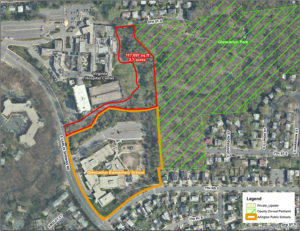 Peter’s Take is a weekly opinion column. The views and opinions expressed in this column are those of the author and do not necessarily reflect the views of ARLnow.com.
Peter’s Take is a weekly opinion column. The views and opinions expressed in this column are those of the author and do not necessarily reflect the views of ARLnow.com.
Virginia Senators Mark Warner and Tim Kaine justifiably are worried about the Virginia economic impacts of the automatic, across-the-board federal budget cuts known as sequestration. Absent a Congressional budget deal by Sept. 30–less than three weeks from now, we face either those automatic cuts, a partial federal government shutdown or both:
“If we have the return of sequestration, it’s going to be even worse than it was a couple of years ago, because every agency, particularly the Defense Department, has cleared out most of their coffers,” Warner said. “So that’s why they’ve got to get rid of sequestration and those negotiations need to be starting now, and not wait until the end of September.”
The Virginia economic effects will be dramatic and negative, Warner warned even more recently. And Northern Virginia, including Arlington, is the area of Virginia that is most at risk.
Even prior to this latest threat, Arlington and the Northern Virginia regional economy were experiencing the significant negative impacts of the slowdowns in federal spending that began in 2011. Federal government downsizing “has seen the D.C. region’s gross regional economy shrink two years in a row beginning in 2013.” Federal government downsizing has led to the large increases in commercial office vacancy rates in Arlington and throughout Northern Virginia. There is no end in sight.
The ripple effects are predictable:
As government contractors consolidate, they’ll need less office space. That puts pressure on lease rates region-wide, there will be less construction work, and the necessary process of restructuring from inefficient and expensive land-use patterns to more cost-effective patterns will drag out.
For these reasons, Northern Virginia business leaders are speaking out in favor of a bi-partisan Congressional budget deal:
“Where we want to see bipartisan support and having the parties work together is the avoidance of a government shutdown”, says Jim Corcoran, chief executive of the Fairfax County Chamber of Commerce. … Another shutdown “is the most disruptive thing that can happen.”
Conclusion
The slow-down in federal spending that began in 2011 already has had a serious negative impact on Arlington’s economy. That negative impact has manifested itself in our average 21 percent commercial office vacancy rate, producing annual losses of tens of millions of local tax dollars, and putting added pressure on the residential tax rate. Sequestration and/or a partial government shut-down would have additional dramatic and negative impacts.
It’s time to contact our Republican and Democratic Congressional leaders, and urge them to reach a bi-partisan budget deal to avoid this. You can do that by emailing them as follows:



